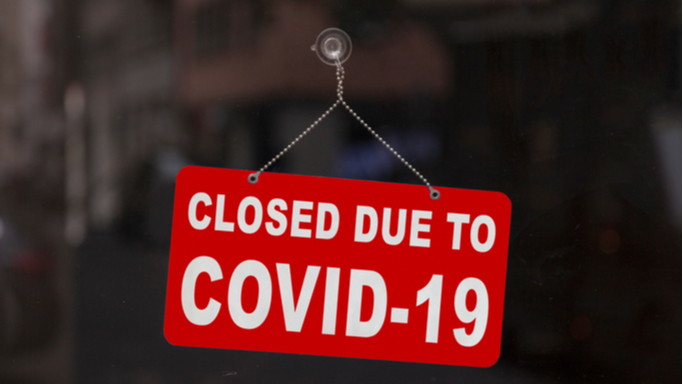Thanksgiving is usually a great time for small businesses. Beauty and nail salons buzz with customers getting services before Thanksgiving gatherings. Local takeout restaurants field tons of takeout and delivery orders for dinner the night before Thanksgiving. Black Friday and Small Business Saturday shoppers refuel at mall and neighborhood restaurants.
This year, foot traffic is almost non-existent, where permitted, and dining options are struggling to keep their doors open.
Women hit hard by lockdowns and restrictions
The second wave of coronavirus infections has hit many regions, but it is the lockdowns and severe restrictions imposed by states and municipalities across the country that are responsible for what will be a sad Thanksgiving week for many small businesses. Female small business owners and workers will bear the heavy brunt of these hardships.
The New York Times tells the stories of women in New York City who own or work in nail salons, many of them immigrants. They have been hanging on to their businesses by a thread after new restrictions limited capacity and customers have also been slow to return:
With 26 years of nail salon experience and 20 years of savings poured into her own business, Ms. Lee, 53, said there was nothing else that she can imagine doing. But she’s barely staying afloat.
“Even though it was hard before, I was always able to pay the bills. But now, no matter how hard I work, I make no money,” she said.
Nail salon visits in the state have dropped by more than 50 percent, and sales have fallen by more than 40 percent, according to an October survey of 161 salon owners conducted by the Nail Industry Federation of New York.
In Queens, Rambika Ulak KC, 50, said she had so much business shortly after reopening in July that she hired back all 10 of her employees part-time. But now, she sees only about four customers a day.
Ms. Ulak dropped out of college in Nepal to come to the United States… Now, as her business erodes, she finds herself looking back at the photos even more often.
“That’s why I work so hard,” Ms. Ulak said. “So I can tell her, ‘Don’t think of my future, just be happy and focus on your studies.’”
On the other coast, California just imposed new night-time curfews (prohibitions on any “non-essential” activities after hours) throughout most of the state.
Meanwhile, Los Angeles has shut down outdoor dining dealing restaurants, breweries, and bars a significant blow. With indoor dining prohibited all they have left is takeout and delivery.
This is devastating news for California eateries which had just been reduced to 50-percent outdoor dining. Many restaurants invested in furniture, heating equipment, and sanitation supplies to expand outdoor seating to sidewalks, streets, and parking lots.
A Manhattan Beach restaurant owner, Sylvie Gabriele of Love & Salt, explained the math behind how the new restrictions would impact her employees and her business:
The reduction and curfew is a huge financial blow. I did calculations for the curfew. Last seating is at 8 p.m. instead of 9:30 p.m. We are talking at least 20 to 30 covers lost per night at $65 per person that’s $39 to 59,000 per month lost in just an hour curfew reduction. The 50 percent reduced capacity will cut sales in half. This means a loss in revenues of a couple hundred thousand dollars. I’m also hugely worried about my staff. How are they going to pay their bills? UI is not what it was at the beginning of the pandemic. Do I keep the excess staff on and pay them out of pocket for a couple of months and lose those dollars too? There is a lot to cope with and solve. Yet I also understand and respect the virus. It’s surging and people’s lives matter more than dollars but it’s a double edge sword.
Many small business everywhere are hanging on by a thread
Nationwide, small businesses have struggled to survive. According to an analysis by Yelp.com, nearly 100,000 small businesses (such as daycare centers, nail salons, and even tattoo parlors) that temporarily closed their doors this spring never reopened.
The National Federation of Independent Business (NFIB) found that one-in-five small businesses anticipate laying off workers within the next six months and that one-in-five small businesses will close early next year if conditions don’t improve.
The World Economic Forum mapped small business closures across the country and found that the biggest losses were several California cities including San Francisco, San Jose, Sacramento, Oakland, and San Antonio, and other big cities including Washington, D.C., Boston, and New Orleans. It’s not surprising that these are cities with heavy restrictions on businesses.
There are calls for another coronavirus relief package with additional funding for the Paycheck Protection Program (PPP). The PPP was a well-intentioned program that kept some businesses afloat and allowed women and men to keep their jobs earlier in the pandemic.
However, without Americans engaging in economic activity–dining out, hosting parties, attending sporting events, shopping, attending school in person, and even going into the office to work–no amount of aid can keep them solvent indefinitely. The costs are just too high.
Many Americans are questioning the decision-making behind these draconian measures and they have good reasons to.

